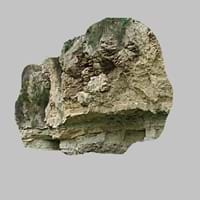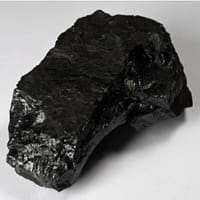Definition
A water-soluble mineral sediment resulting from concentration and crystallization by evaporation from an aqueous solution
Coal is a combustible black or brownish-black sedimentary rock usually occurring in rock strata in layers called coal beds
Discoverer
Usiglio
John Peter Salley
Etymology
From a sediment left after the evaporation
From the Old English term col, which has meant mineral of fossilized carbon since the 13th century
Class
Sedimentary Rocks
Sedimentary Rocks
Sub-Class
Durable Rock, Soft Rock
Durable Rock, Soft Rock
Group
Not Applicable
Not Applicable
Other Categories
Coarse Grained Rock, Fine Grained Rock, Medium Grained Rock, Opaque Rock
Coarse Grained Rock, Fine Grained Rock, Medium Grained Rock, Opaque Rock
Texture
Earthy
Amorphous, Glassy
Color
Colourless, Green, Grey, Silver, White
Black, Brown, Dark Brown, Grey, Light to Dark Grey
Durability
Durable
Durable
Appearance
Glassy, Vesicular and Foilated
Veined or Pebbled
Interior Uses
Decorative Aggregates, Entryways, Flooring, Homes, Interior Decoration
Not Yet Used
Exterior Uses
As Building Stone, As Facing Stone, Garden Decoration, Paving Stone
Not Yet Used
Other Architectural Uses
Curbing
Not Yet Used
Construction Industry
As a Flux in the Production of Steel and Pig Iron, As a Sintering Agent in Steel Industry to process Iron Ore, As Dimension Stone, Cement Manufacture, for Road Aggregate, Making natural cement, Manufacture of Magnesium and Dolomite Refractories
Cement Manufacture, for Road Aggregate, Making natural cement, Steel Production
Medical Industry
Taken as a Supplement for Calcium or Magnesium
Not Yet Used
Antiquity Uses
Artifacts
Artifacts
Commercial Uses
Used in the manufacture of Ceramic Powder, Used in the preparation of Sulfuric Acid and Silicon Diborite
Alumina Refineries, Electricity Generation, Liquid Fuel, Manufacture of Soap, Solvents, Dyes, Plastics and Fibres, Paper Industry
Types
Not Available
Peat, Lignite, Sub-Bituminous Coal, Bituminous Coal, Anthracite, Graphite
Features
Generally rough to touch, Splintery, Veined
Helps in production of Heat and Electricity, Used as fossil fuel
Archaeological Significance
Monuments
Not Yet Used
Not Yet Used
Famous Monuments
Not Applicable
Not Applicable
Sculpture
Not Yet Used
Not Yet Used
Famous Sculptures
Not Applicable
Not Applicable
Pictographs
Used
Not Used
Petroglyphs
Used
Not Used
Figurines
Not Yet Used
Not Yet Used
Formation
Evaporite is water-soluble mineral sediment which forms from concentration and crystallization by evaporation from an aqueous solution.
Coal forms from the accumulation of plant debris in a swamp environment which is buried by sediments such as mud or sand and then compacted to form coal.
Mineral Content
Calcite, Cancrinite, Gypsum, Kyanite, Magnetite
Analcime, Apatite, Barite, Calcite, Chalcopyrite, Chlorite, Chromite, Clausthalite, Clay Minerals, Crandallite Group, Dolomite, Feldspar, Galena, Gypsum, Marcasite, Muscovite or Illite, Pyrite, Quartz, Siderite, Sphalerite, Zircon
Compound Content
CaMg(CO3)2, CaO, Calcium Sulfate, KCl, MgO, NaCl
Carbon, Hydrogen, Nitrogen, Oxygen, Sulphur
Types of Metamorphism
Burial Metamorphism, Cataclastic Metamorphism, Contact Metamorphism, Impact Metamorphism, Regional Metamorphism
Burial Metamorphism, Cataclastic Metamorphism, Regional Metamorphism
Types of Weathering
Not Applicable
Not Applicable
Types of Erosion
Not Applicable
Not Applicable
Grain Size
Medium to Fine Coarse Grained
Medium to Fine Coarse Grained
Fracture
Conchoidal
Conchoidal
Porosity
Less Porous
Less Porous
Luster
Subvitreous to Dull
Dull to Vitreous to Submetallic
Compressive Strength
Not Available
Cleavage
Perfect
Non-Existent
Toughness
Not Available
Not Available
Specific Gravity
2.86-2.99
1.1-1.4
Transparency
Translucent
Opaque
Density
2.8-2.9 g/cm3
1100-1400 g/cm3
Resistance
Heat Resistant, Pressure Resistant
Heat Resistant
Deposits in Eastern Continents
Asia
Not Available
Bangladesh, Burma, Cambodia, China, India, Indonesia, Kazakhstan, Malaysia, Mongolia, Pakistan, Turkey, Vietnam
Africa
Not Available
Botswana, Kenya, Morocco, Mozambique, South Africa, Tanzania
Europe
United Kingdom
Belgium, Bulgaria, England, France, Germany, Greece, Hungary, Kosovo, Netherlands, Norway, Poland, Romania, Serbia, Slovakia, Slovenia, The Czech Republic, Ukraine, United Kingdom
Others
Not Yet Found
Not Yet Found
Deposits in Western Continents
North America
USA
Canada, Mexico, USA
South America
Colombia, Paraguay
Brazil, Chile, Colombia, Venezuela
Deposits in Oceania Continent
Australia
Central Australia, Western Australia
New South Wales, Queensland, Victoria
All about Evaporite and Coal Properties
Know all about Evaporite and Coal properties here. All properties of rocks are important as they define the type of rock and its application. Evaporite and Coal belong to Sedimentary Rocks.Texture of Evaporite is Earthy whereas that of Coal is Amorphous, Glassy. Evaporite appears Glassy, Vesicular and Foilated and Coal appears Veined or Pebbled. The luster of Evaporite is subvitreous to dull while that of Coal is dull to vitreous to submetallic. Evaporite is available in colourless, green, grey, silver, white colors whereas Coal is available in black, brown, dark brown, grey, light to dark grey colors. The commercial uses of Evaporite are used in the manufacture of ceramic powder, used in the preparation of sulfuric acid and silicon diborite and that of Coal are alumina refineries, electricity generation, liquid fuel, manufacture of soap, solvents, dyes, plastics and fibres, paper industry.










